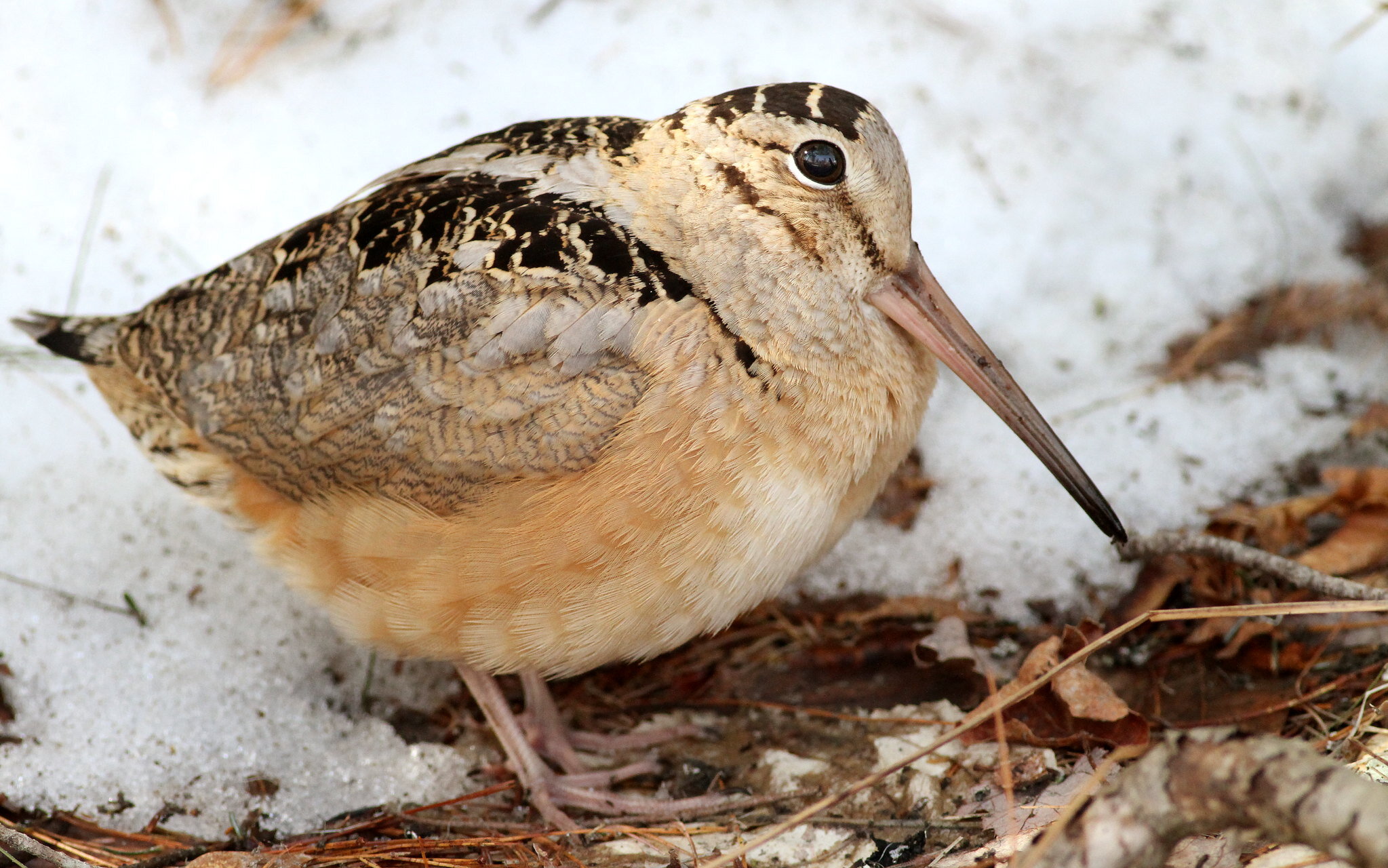American woodcock, photo by Fyn Kynd FCC
An unlikely candidate for one of the most beloved birds of spring, this squat, neckless weirdo nevertheless invokes breathlessness upon seeing its spring mating ritual. Belonging to a family of water-associated shorebirds, this bird somehow ended up living its life away from water in early successional woodland, shrubland, and grassland. Its heavy looking body and short legs are not all that unusual when compared to its buzzy and bug-like “peeent” call that the males make during courtship.
Is this bird an ugly duckling? Well, not exactly.
Though its mish-mashed body and habits suggest drunken design, the American woodcock somehow maintains a level of coolness and popularity that overcomes its oddness. These birds can be reliably found in open areas surrounding woods, savannas, and thickets. Their performances begin at dusk, starting with a single peent and climaxing here at Faville Grove with dozens of birds peenting, twittering skyward higher and higher, and falling from the sky like a shot plane, only to land in about the same spot with a declaritive “peent!”—a reaffirming declaration that the woodcock did indeed survive what looked like certain death.
American woodcock overwinter in the Gulf states and have returned to Wisconsin in the past month or so, migrating in darkness over Midwestern states.
You can view woodcock here at Faville Grove Sanctuary. Prairie Lane and North Shore Road are the best spots, but if you are wandering around at dusk, you’re likely to a hear a woodcock almost anywhere in the sanctuary.
Dusk at Faville Grove Sanctuary. Photo by Drew Harry
The best approach is to get settled in a bit before dusk and face west—that way you’ll be able to see the vespering birds flying into the fading light. Once the birds go through a few cycles of peenting and flying, you should be able to track down their location, and if you have binoculars you can try and trace their flight through the sky. Although the sequence appears like clockwork, sometimes a woodcock will surprise you; their fluttering flight at first sounds closer than you’ve heard, and only then do you realize that the bird is headed right for you! Of course, you whip your head and the woodcock has missed you by a considerable margin. Whether the bird was sending a message or entirely caught up in its own ritual is open for interpretation.
This spring, one woodcock has carved out a territory right near my house. I can watch it in the evenings from my deck, but I look east, so it is only a fleeting performance. My viewership is no matter, every night the bird alternates between peenting and flying, this squat and singular little bird, delighting me and perhaps a female woodcock with this strange and delightful spectacle.
Woodcock also have a strange effect on other birds. Where woodcock are found peenting and displaying, bird numbers and diversity are more than 1.5 times higher than in random forest plots. In part, this makes sense because of the diversity of habitats that woodcock use, from foraging in oak woods during the day, to performing in open prairies in the evening, to nesting near shrub thickets or at the base of trees.
If you’re able to, try to get to Faville Grove at dusk and enjoy the evening performance of the woodcock!
Written by Drew Harry, Faville Grove Sanctuary land steward





